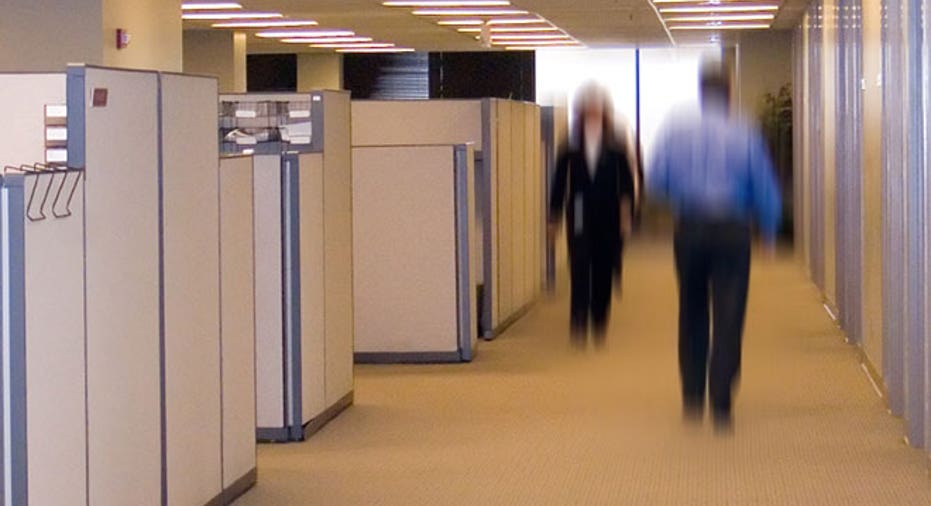Stuck in a Dead End Job? It Could be Your Fault

If you’ve ever complained that you’re stuck in a dead-end job, take note: you could be your own worst enemy.
A recent VitalSmarts survey shows 97% of employees report they have a career-limiting habit. The attitudes of “It’s not my job,” procrastination, resistance to change and a negative attitude are among the top five career-limiting habits that keep employees from achieving their potential at work, which in turn limits their raise and promotion potential.
Also on the list of career-inhibiting habits include disrespect, short-term focus, selfishness, passive aggressiveness and risk aversion, according to the survey. What’s more, almost half of managers surveyed said deep-sixing a bad habit is three times more important than increasing technical skills.
What’s discouraging is that only 10% to 20% of employees actually make lasting change, the managers surveyed say.
The problem is most people think willpower is the key to changing long-standing bad behavior, says Joseph Grenny, VitalSmarts cofounder and Change Anything co-author. They fall back on their known personality traits and skill sets and then beat themselves up for failing.
“We need to take control of the things we can,” Grenny says. He says employees looking to break habits should seek regular and honest feedback from managers and colleagues, make regular self-assessments of our strengths and weaknesses and identifying the subtle, but powerful, influences that shape our behaviors.
Feedback should go beyond template performance review issues. Sometimes what’s bothering people or managers may be in-between-the-crack behaviors that may not appear in formal categories, says Nancy Rothbard, the David Pottruck associate professor management at Univesity of Pennsylvania’s Wharton School.
Because targeted feedback is the most useful, employees must work at probing for specifics. If you’re compared to a high performer, you may need to ask: “What is it about Jane you want me to emulate?”
Social support and the right environment contribute to change and building them is an iterative process, says Grenny.
“You may need to redesign your social context.” He adds that there is a tendency to under-appreciate the profound influence of people around us. They redefine what normal looks like; they telegraph behavior and can act as accomplices.
You may also need to restructure your work environment and tell managers or coworkers you need to make some changes.
Grenny says low-walled cubicles or partitionless workspaces can increase distraction, and suggest wearing earphones, requesting a new desk location to a quieter after or even contracting with fellow employees to eliminate interactions can enable you to be more productive.
Change isn’t easy and neither is admitting to faults. Rothbard says workers need to feel safe in their workplace to show their vulnerabilities.
That being said, Grenny emphasizes change is incumbent on self-awareness and motivation and says creating a small group of colleagues to talk with can help develop a safe environment.
“People need to feel comfortable expressing themselves whether this involves cool ideas or failures,” says Praveen Tipirneni, senior vice president of corporate development and global strategy at Cubist Pharmaceuticals. Fostering this openness is an ongoing employee development objective at the company which has received 100% participation in a pilot sociometric analysis project.
The project zeros in on what productive interactions look like relative to information flows within work groups and the company as well as what employees can do to improve their productivity.
Part of the project includes creating idea panes, whiteboard-like wall space in lounge areas that allow people to meet and “paint” their questions or ideas on the wall, a practice that leads to causal discussions, Tipirneni says.
Tips to Shape Successful Career Behaviors:
Create a Personal Motivation Statement. Visit your “default future”—the career you’ll have if you are repeatedly passed up for promotion, says Grenny. Post visual reminders of what a successful career might bring like a bigger house, vacations and a full retirement fund.
Invest in professional development. New habits always require new skills. Top performers hone their craft. As one part of a larger change strategy, actively develop the skills you need to be viewed as a top performer through training, workshops or books.
Hang with the hard workers. Surround yourself with hard-working friends who share your career goals, and distance yourself from slackers. “Seeing other people trying to change is motivating and allows you to see the value new behaviors bring to the organization, says Rothbard.
Find a mentor. Changing habits requires help. Find a trusted mentor to encourage your progression and help you navigate career development opportunities. Also, pick a friend whose opinion you deeply respect and for six months make yourself accountable to his or her feedback every day, says Grenny.
Build in accountability. If you’re on a team project and you know you’re, for example, flakey about deadlines or easily distracted, carve out a time slot on your calendar and use it to specifically work on that project, disallowing any external interruptions, says Rothbard.
Job-craft your role for meaningfulness. Change something about your role to highlight your strengths and compensate for weaknesses by partnering with someone whose skills are complementary to yours.
Control your workspace. If you’d benefit from close association with another team, ask to move offices. When possible, turn off electronic interruptions that keep you from being as productive as you need to be. You might also use post-it reminders to address the tasks that will reinforce important behaviors. “This rivets my attention,” says Grenny, “and creates enormous self-satisfaction.”